History :
The Vijayanagar Empire was a South Indian dynasty based in the Deccan. Perhaps the last magnificent chapter in the history of independent India is the history of Vijayanagar. It was founded by Harihara I and his sibling Bukka Raya in 1336, the empire ruled untill 1646. The ruling dynasty declined in the 1565 after a key military defeat by the Deccan Sultanates. The empire is named after its capital city of Vijayanagar, the remarkable ruins of which surround modern World Heritage site Hampi is in modern Karnataka, India, till today.
Several theories have been projected claiming the basis of the Vijayanagar Empire. A few assert that Harihara I and Bukka Raya I, the originators of the kingdom, were the ones primarily allied to the Kakatiya. Prior to the premature 14th century augment of the Vijayanagara empire, the Hindu realms of the Deccan, the Seuna Yadavas of Devagiri, the Kakatiya dynasty of Warangal, the Pandya Kingdom of Madurai, and the insignificant kingdom of Kampili were continually marched into by Muslims from the north, and by 1336 had been overpowered by Alla-ud-din Khilji and Muhammad bin Tughluq, the Sultans of Delhi. The Hoysala Empire was the solitary enduring Hindu kingdom in the path of the Muslim invasion. After the demise of Hoysala Veera Ballala III during a skirmish in opposition to the Sultan of Madurai in 1343, the Hoysala Empire compound with the mounting Vijayanagar Empire.
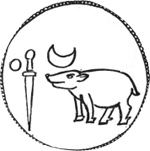
During this period only the temple construction ethnicity in South India was founded by the Architecture manner. The blend of all convictions and dialects enthused architectural advance of Hindu temple creation, foremost in the Deccan and shortly in the Dravidian expressions using the local granite. The Secular royal structures show the influence of the Northern Deccan Sultanate architecture and competent management along with dynamic overseas trade introduced innovative expertise like water management systems for irrigation.
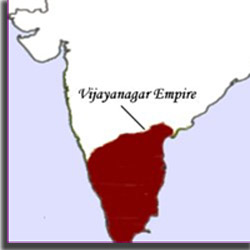
Place |
Karnataka |
Period |
1336-1646 AD |
Language |
Telugu, Kannada |
Religion |
Hindu |
Rulers |
Harihara Raya I, Bukka Raya I, Harihara Raya II, Virupaksha Raya, Bukka Raya II |
The Vijayanagara Empire`s support facilitated fine arts and literature in order to attain new-fangled pinnacles in the languages of Kannada, Telugu, Tamil and Sanskrit, while Carnatic Music advanced into its existing structure. The Vijayanagar Empire shaped an era in South Indian history thereby surpassing regionalism with the promotion of Hinduism as a coalescing feature.
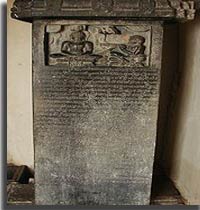
Languages like Telugu, Tamil, Kannada and Sanskrit developed and literature reached new heights. Carnatic music, South Indian classical music were developed tremendously and achieved its current form. The kingdom created an era where Hinduism was a unifying factor and went beyond all boundaries of language and beliefs.
The Vijayanagar Empire was famous for its rich heritage and beautifully constructed monuments that were spread over Southern India. The rich cultural heritage of South India was the main inspiration for temple architectural styles.
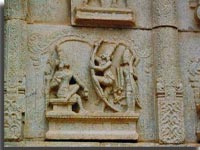
Vijayanagara rulers celebrated the Dussehra festival with much devotion when the king sat on his bejeweled throne in the center of Mahanavami Dibba, a decorated platform, and watched a colourful procession pass by. The place is worth a visit as the sides of the platform still retain the beautiful sculptures depicting many soldiers, dancers and an array on animals. Water tanks and channels abound in Hampi.
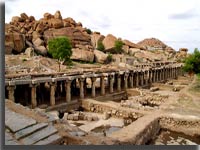
For 200 years the Vijayanagar Empire emerged as one of the most powerful kingdoms in the Peninsular India. The empire was so strong that four Muslim kingdoms had to come together to destroy this strong kingdom. The ruins of this great kingdom can be seen even today at Hampi which has been declared a protected site by the UNESCO.


